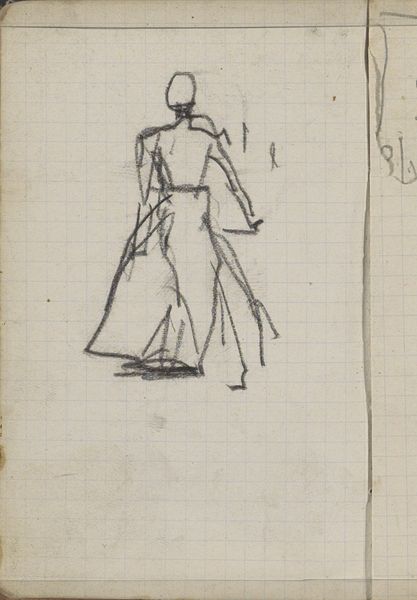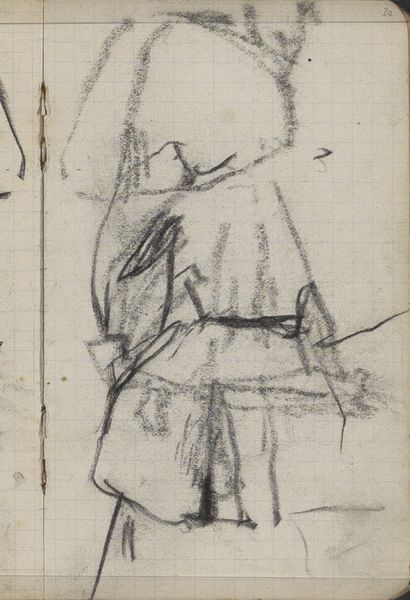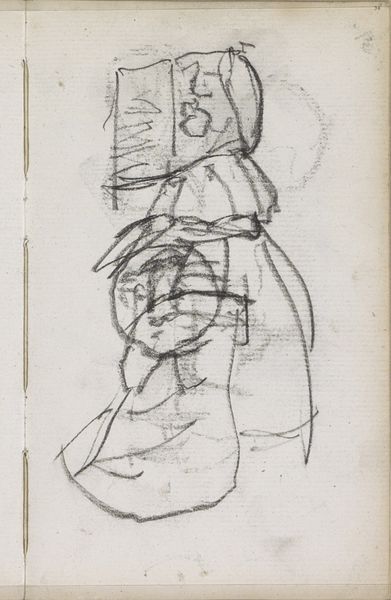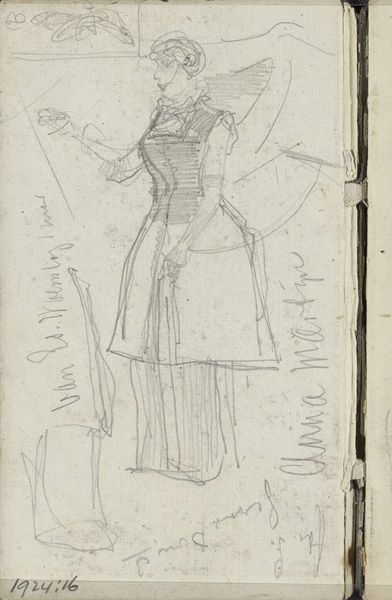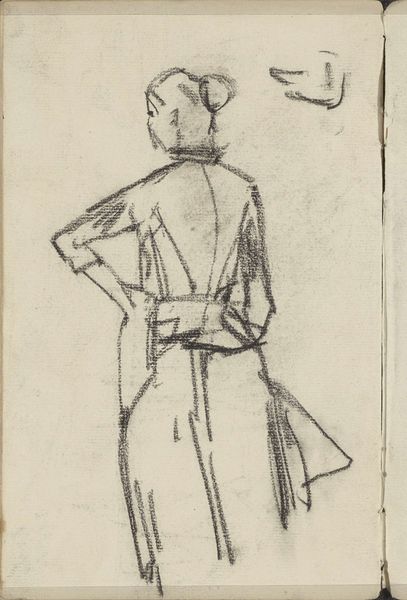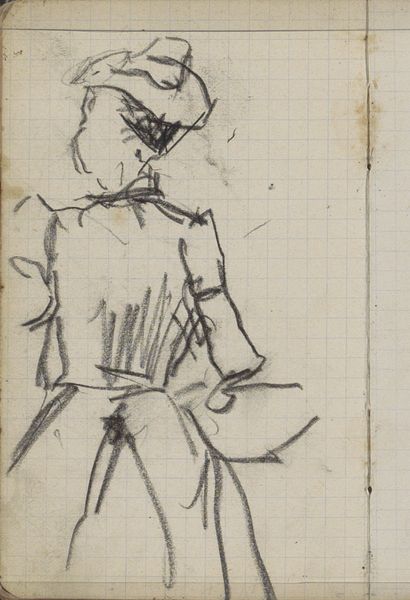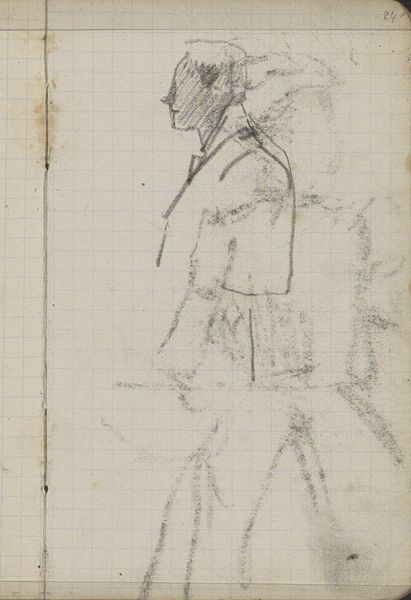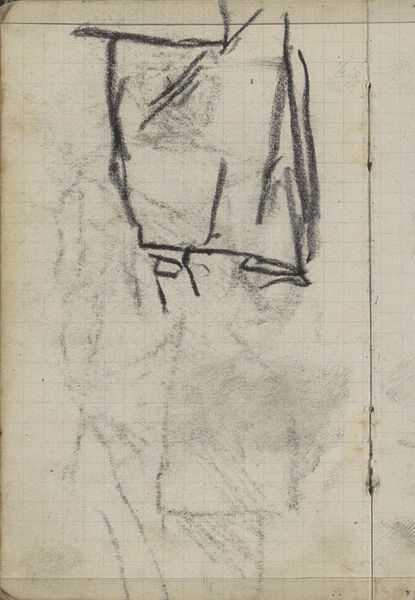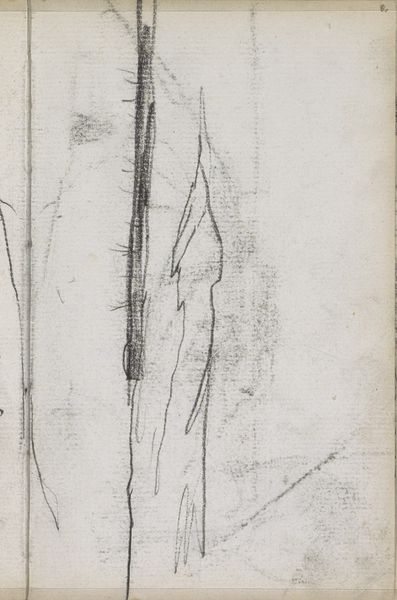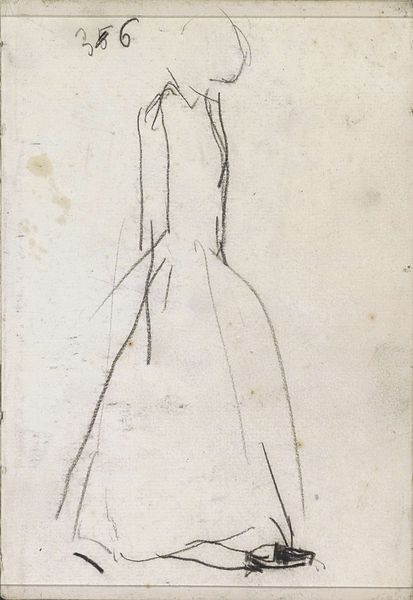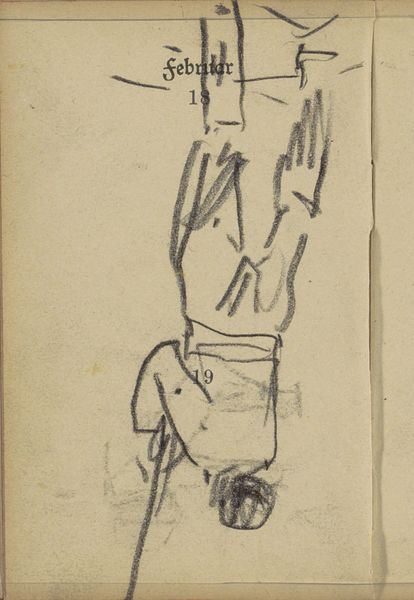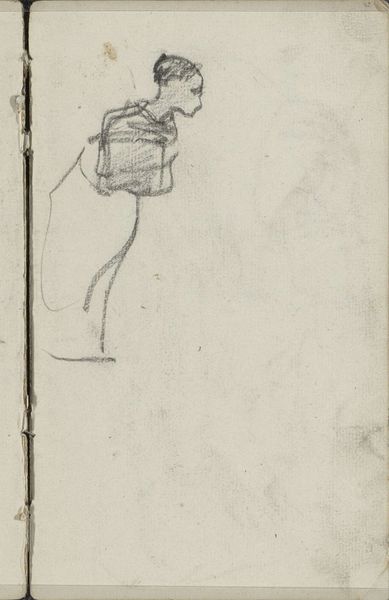
Copyright: Rijks Museum: Open Domain
Curator: It strikes me immediately as the echo of a fleeting moment, a captured impression rather than a polished portrait. Editor: Exactly. Here we have “Kostuumstudie,” a costume study created around 1893 by George Hendrik Breitner. It's currently held at the Rijksmuseum. The work, a charcoal drawing on paper, gives us an interesting peek into Breitner’s artistic process. Curator: Breitner… now, he had a way of seeing the world as though it were perpetually out of focus. I like the immediate sketchiness – the paper’s almost breathing underneath those light pencil strokes. Tell me, what sort of cultural memory do you find lingering in this quick sketch? Editor: Well, sketches like these, costume studies specifically, often served a dual purpose in the 19th century. Beyond their immediate utility for theatrical productions or portraiture, they captured the aspirations and anxieties of the era, often embodying an almost dreamlike, nostalgic look at the past. Even an incomplete sketchy design like this carries with it layers of social status, the performative self, the ideals to which the person adheres, or the image they’re hoping to portray to the outside world. It really captures what it’s like when one doesn't fit one of those roles. Curator: Indeed! But for me, it’s less about these external factors and more about the internal landscape of Breitner himself. This feels intensely personal, as if we’ve stumbled upon a secret page torn from his personal sketchbook, some hidden page where thoughts danced uninhibited, on toned paper. I mean, what’s a personal sketchbook if it isn’t about what is authentic within you, right? I wonder, was it truly a costume study or a soul study in disguise? Editor: That’s a very insightful perspective, an alternative truth, I'd say! And it’s true that sometimes an image is more than its surface representation; sometimes these images offer both insight and escape. The rapid strokes also bring to mind a Japanese calligraphy that reflects inner discipline, with bold strokes revealing the true self with authenticity in imperfection, beyond style, that you noted. Curator: So, at the end, it seems as if it is about searching for yourself or, rather, showing yourself – maybe those things are connected! Editor: Maybe… or maybe, as semioticians say, the image sees you.
Comments
No comments
Be the first to comment and join the conversation on the ultimate creative platform.
